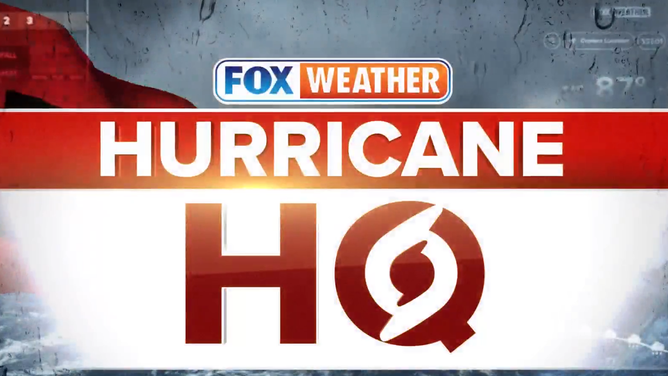Bryan Norcross: Atlantic tropical disturbance Invest 92L likely to develop this week
The National Hurricane Center is giving it a high chance of developing in the red zone. If winds in the circulation reach 40 mph, it will be designated Tropical Storm Bret.

Generic Hurricane HQ
(FOX Weather)
Updated 9:30 a.m. EDT
The unusual June tropical disturbance – technically called Invest 92L - that moved off the African coast last week continues to look more organized. All indications are that it will develop into a tropical depression or tropical storm in two or three days. What happens after that is the big question.
The National Hurricane Center is giving it a high chance of developing in the red zone. If winds in the circulation reach 40 mph, it will be designated Tropical Storm Bret.

The tropical weather outlook for the Atlantic Ocean.
(FOX Weather)
It’s not unprecedented for a storm to develop in this part of the ocean this early in the hurricane season, but there are only a few instances in the record book.
On average, the third named system comes along on August 3. Recall a system developed in January in the North Atlantic that was determined to have been a subtropical storm after the fact. So, even though it didn’t get a name at the time, it counts since it would have been named if the full analysis had been done in real-time. It was definitely a marginal case.
Even without counting that system, the average date the second named storm shows up is July 17. So this is way ahead of schedule, no matter how you think about it.

The latest details on Invest 92L in the Atlantic
(FOX Weather)
There is nothing obviously wrong with the environment the disturbance is moving into, and the water under the system is extremely warm. There is some dust over the Atlantic, but the plumes have not been especially strong this year, and it appears the dusty air will stay north of the path of the system.
The consensus of the computer forecasts is that the system – likely as a tropical storm – will be heading in the general direction of the northeastern Caribbean islands about Thursday, but still be well offshore. High pressure to the north, which has been steering the system thus far should begin to weaken about that time. So the tropical storm, or whatever it is, will begin a bend to the north.
Then the variables come into play.
If the system moves a little faster, the blocking high pressure won’t have weakened as much, and the Caribbean islands would be affected. But if the storm slows down, it might also strengthen, and the system would likely turn north well before reaching the islands.
The bottom line continues to be, the people in the northeast Caribbean need to stay informed this week.
The long-range computer forecast models indicate that the atmospheric pattern over Florida and the East Coast will continue to be hostile, so there’s no sign of a threat to the Bahamas or the continental U.S. at this time.
Disturbances will continue to move off Africa. We’ll see if the dust and dry air that typically contribute to a hostile environment over the tropical Atlantic in June takes a foothold after this disturbance is gone. One of the normal deterrents is the ocean water temperature in a typical year, but the ocean is so warm this year that that’s not a factor.